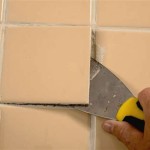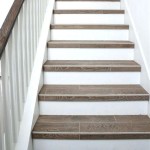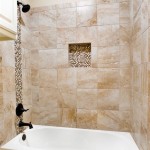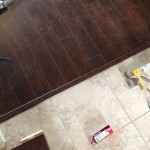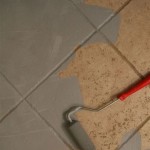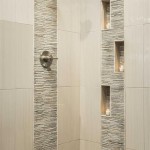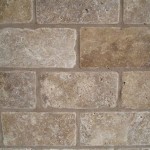Wood Floor Tiles: The Epitome of Natural Beauty
Wood floor tiles represent a compelling synthesis of the timeless appeal of natural wood and the practical advantages of tile flooring. They offer a unique solution for homeowners and designers seeking to incorporate the warmth and character of wood into their spaces without the maintenance demands or environmental concerns sometimes associated with solid hardwood. These tiles, crafted from materials like ceramic or porcelain, are meticulously designed to replicate the intricate grain patterns, textures, and color variations found in real wood, making them a versatile and visually stunning flooring option.
The allure of wood flooring is undeniable. It evokes feelings of comfort, sophistication, and connection to nature. However, traditional hardwood floors can be susceptible to moisture damage, scratching, and wear, particularly in high-traffic areas or environments with fluctuating humidity levels. Wood floor tiles address these limitations by offering a durable, water-resistant, and low-maintenance alternative. The manufacturing process allows for the creation of tiles that convincingly mimic a wide array of wood species, from the rich, dark tones of walnut and mahogany to the lighter, more contemporary shades of oak and maple.
Furthermore, the advent of advanced printing technologies has enabled manufacturers to produce wood floor tiles with incredibly realistic textures and details. Embossed surfaces, for example, create a tactile experience that closely resembles the feel of real wood grain. High-resolution imagery captures the subtle nuances of knots, swirls, and imperfections, adding to the authenticity of the finished product. This level of realism makes it increasingly difficult to distinguish wood floor tiles from genuine hardwood, even upon close inspection.
The versatility of wood floor tiles extends beyond their aesthetic appeal. They are suitable for use in a variety of applications, including residential, commercial, and even outdoor settings. Their inherent resistance to moisture makes them an ideal choice for kitchens, bathrooms, and laundry rooms, where traditional hardwood flooring might be prone to warping or damage. In addition, wood floor tiles can be installed over radiant heating systems, providing a comfortable and energy-efficient flooring solution.
Durability and Longevity
One of the primary advantages of wood floor tiles is their exceptional durability. Unlike solid hardwood, which can be easily scratched, dented, or stained, ceramic and porcelain tiles are highly resistant to these types of damage. The dense composition of these materials makes them impervious to water, stains, and fading, ensuring that the flooring will maintain its beauty and integrity for many years. This durability also translates to lower long-term maintenance costs, as wood floor tiles do not require sanding, refinishing, or special cleaning products.
Porcelain tiles are particularly known for their strength and resilience. They are fired at extremely high temperatures, resulting in a very hard and dense material that can withstand heavy foot traffic and resist abrasion. Ceramic tiles, while slightly less durable than porcelain, still offer excellent resistance to wear and tear, making them a suitable choice for most residential applications. The longevity of wood floor tiles makes them a cost-effective investment in the long run, as they will not need to be replaced as frequently as other types of flooring.
The resistance to moisture is another key factor contributing to the durability of wood floor tiles. Unlike hardwood, which can swell, warp, or rot when exposed to water, ceramic and porcelain tiles are virtually impervious to moisture. This makes them an ideal choice for bathrooms, kitchens, and other areas that are prone to spills or humidity. The water resistance also prevents the growth of mold and mildew, contributing to a healthier indoor environment.
Furthermore, the color and pattern of wood floor tiles are typically baked into the material during the manufacturing process, rather than applied as a surface treatment. This ensures that the color will not fade or wear away over time, even with prolonged exposure to sunlight or heavy use. This colorfastness adds to the overall longevity and aesthetic appeal of the flooring.
Design Versatility and Aesthetic Appeal
Wood floor tiles offer a remarkable level of design versatility, allowing homeowners and designers to create a wide range of looks and styles. They are available in a variety of sizes, shapes, colors, and patterns, enabling them to be used in numerous creative ways. From replicating the classic look of traditional hardwood planks to creating unique and contemporary designs, wood floor tiles provide endless possibilities for customization.
The availability of different wood species imitations is a significant advantage. Homeowners can choose from a wide range of wood types, including oak, maple, cherry, walnut, and many others. Each species has its own distinct grain pattern, color variation, and overall character, allowing for the creation of a flooring that perfectly complements the aesthetic of the space. In addition, wood floor tiles can be found in a variety of finishes, such as matte, gloss, and textured, further enhancing their visual appeal.
The size and shape of the tiles also contribute to the design versatility. Wood floor tiles are available in a range of sizes, from small mosaic tiles to large-format planks. The larger planks can create a more seamless and expansive look, while the smaller tiles can be used to create intricate patterns and designs. The shape of the tiles can also vary, with options including rectangular planks, square tiles, and even hexagonal tiles. The flexibility in size and shape allows for the creation of unique and personalized flooring designs.
Moreover, wood floor tiles can be installed in a variety of patterns, adding further visual interest to the space. Common installation patterns include straight lay, staggered lay, herringbone, and chevron. Each pattern creates a different look and feel, allowing homeowners to customize the flooring to their specific preferences. The ability to choose from a range of patterns and installation methods makes wood floor tiles a highly versatile design option.
Environmental Considerations and Sustainability
In an increasingly environmentally conscious world, the sustainability of building materials is a crucial consideration. Wood floor tiles offer several environmental advantages over traditional hardwood flooring. They are often made from recycled materials and can be recycled themselves at the end of their lifespan, reducing waste and conserving natural resources. Furthermore, the manufacturing process of wood floor tiles typically involves less energy consumption and generates fewer emissions than the production of solid hardwood.
The use of recycled materials in the production of wood floor tiles is a significant environmental benefit. Many manufacturers utilize recycled glass, porcelain, and other materials in their tile compositions, reducing the demand for virgin resources and diverting waste from landfills. This not only helps to conserve natural resources but also reduces the environmental impact associated with the extraction and processing of raw materials.
The longevity of wood floor tiles also contributes to their sustainability. Because they are highly durable and resistant to wear and tear, they do not need to be replaced as frequently as other types of flooring. This reduces the amount of material that ends up in landfills and minimizes the environmental impact associated with the production and transportation of new flooring.
Furthermore, wood floor tiles can contribute to improved indoor air quality. Unlike some types of flooring that can emit volatile organic compounds (VOCs), ceramic and porcelain tiles are inert and do not release harmful chemicals into the air. This makes them a safer and healthier choice for homes and businesses, particularly for individuals with allergies or sensitivities.
Choosing wood floor tiles can also help to protect forests. By opting for a wood-look alternative, homeowners can reduce the demand for solid hardwood, which can contribute to deforestation and habitat loss. While responsibly harvested hardwood is available, the increased demand puts pressure on forest ecosystems. Wood floor tiles offer a visually appealing and sustainable alternative that helps to conserve these valuable natural resources.
In summary, wood floor tiles offer a compelling combination of aesthetic appeal, durability, and environmental benefits. They provide a practical and sustainable way to incorporate the natural beauty of wood into any space, without compromising on performance or environmental responsibility. Their versatility, longevity, and ease of maintenance make them an excellent choice for homeowners and designers seeking a flooring solution that is both beautiful and functional.

Laminate Floor Century Oak Brown The Tiles House

Upgrade Your Space With Flooring Wood Look Tile One Stop Supplier In China

Laminate Wooden Floor Century Oak Brown The Tiles House

Laminate Wooden Floor Trend Oak Red The Tiles House

Laminate Floor Century Oak Brown The Tiles House

600 X 1200 Wood Look Tile Manufacturer In Skytouch Ceramics

Laminate Wooden Floor Finlay Oak Brown The Tiles House

600 X 1200 Wood Look Tile Manufacturer In Skytouch Ceramics

Oak Multiply Wood Flooring Vienna Oiled Higherground

What Type Of Flooring Looks Good Next To Hardwood From The Forest Llc
Related Posts

